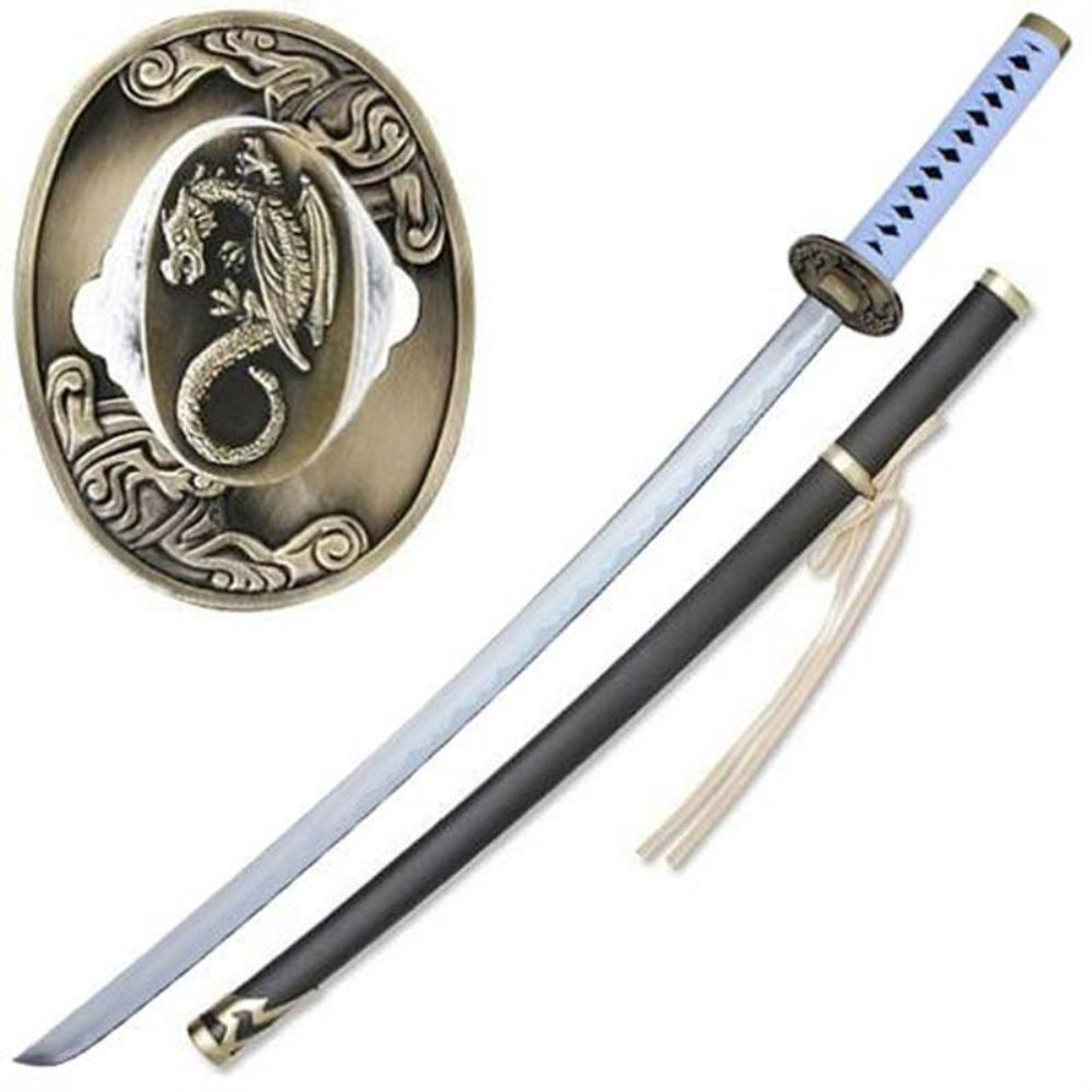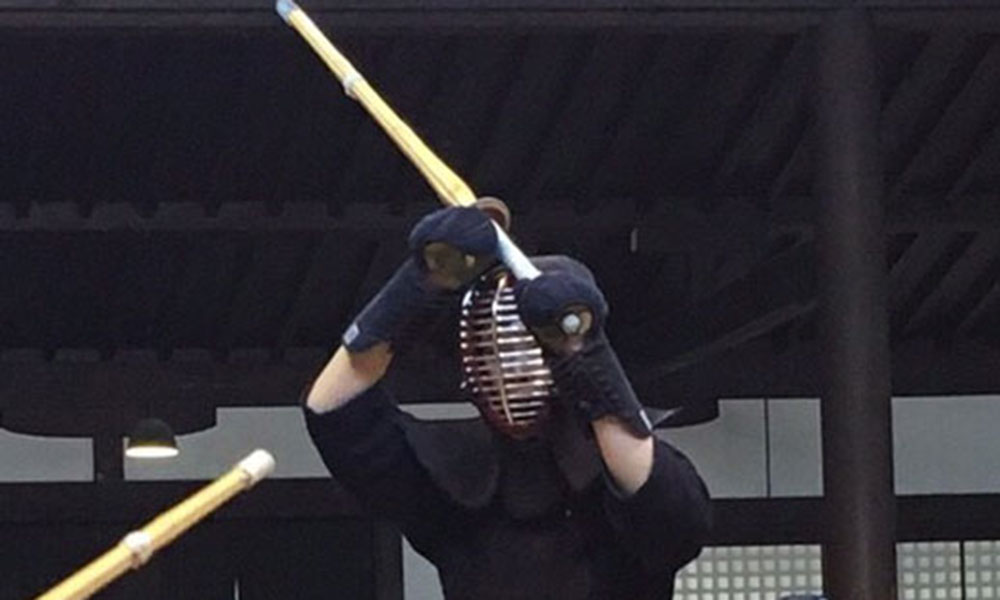5 Essential Katana Techniques for Beginners
Posted by SwordsSwords on Mar 26th 2024
The katana sword, a curved Japanese samurai sword, has been around for centuries. Its elegance and power have been immortalized in countless stories and films, leaving many yearning to learn katana martial arts [kendo, iaido]. But true mastery of the katana goes beyond simply holding a sharp blade.
Unleashing the katana's full potential requires discipline and a foundation in proper katana techniques for beginners. These techniques form the bedrock for safety, control, and ultimately, the ability to deliver powerful and precise cuts with your katana.
This guide will unveil 5 essential katana training techniques for beginners. We'll delve into the proper katana grip (Seiza grip), the art of drawing and sheathing the blade (Battojutsu, Notojutsu), fundamental katana stances (Kamae) for stability, and basic cutting techniques (Zanjutsu). By grasping these core concepts, you'll embark on your journey to understanding the true essence of katana swordsmanship and develop a strong foundation in your kendo or iaido practice.
Essential Katana Techniques for Beginners:
1. Gripping the Katana (Seiza Grip)
The foundation of all katana techniques starts with a secure and comfortable grip. A proper grip allows for optimal control, efficient power transfer, and ultimately, safe handling of the training katana.
Importance of Grip:
Don’t wield a katana like a baseball bat. While it might seem intuitive, this grip hinders your ability to maneuver the sword effectively. A proper katana grip utilizes the entire length of the handle for leverage and control. This translates to precise cuts, powerful strikes, and ultimately, a safer experience.
Mastering the Seiza Grip (Sitting Posture Grip):
The Seiza grip, also known as the formal sitting posture grip, is one of the most fundamental ways to hold a katana sword. It forms the basis for many other stances and techniques. Here's a step-by-step guide to mastering the Seiza grip:
- Seiza Posture: Begin by assuming a Seiza kneeling position (knees hip-width apart, toes tucked inwards, sitting on your heels).
- Place the Katana: Rest the katana horizontally in front of you, blade facing upwards. The guard (tsuba) should be closest to you.
- Left Hand Placement: Slide your left hand down the handle until your thumb rests comfortably on the left side of the guard. Ideally, the base of your palm should be near the end of the handle (tsuka-gata).
- Right Hand Placement: Extend your right hand and grip the handle diagonally across your palm. Your thumb should rest along the side of the tang (nakago), not on the top of the guard. Aim for a firm but relaxed grip with all four fingers comfortably wrapped around the handle.
- Alignment: Ensure your left and right wrists are roughly in line, creating a straight extension from your elbow through the handle.
2. 抜刀 (抜術 - Battojutsu): The Art of Drawing the Sword

Having mastered the grip, we now move on to the art of drawing the Japanese katana, known as Battojutsu (拔術 - Battōjutsu). This seemingly simple act is an essential skill that lays the groundwork for smooth transitions into stances and cutting techniques. More importantly, a safe and controlled draw ensures the safety of yourself and others around you.
Battojutsu in Essence:
Battojutsu goes beyond the physical act of drawing the blade. It embodies the concept of Iaido, emphasizing a state of mental preparedness and focus. However, for beginners, the focus lies on developing a smooth and controlled method for drawing the katana from its sheath (saya).
A Beginner's Guide to Drawing the Katana:

Here's a breakdown of a basic and safe method for beginners to draw the katana sword:
- Start Seated: Assume a Seiza posture with the katana resting on the floor in front of you, blade facing upwards, and guard (tsuba) closest to your body.
- Grip the Saya: Place your left hand on the saya near the seppa (decorative collar at the mouth of the saya).
- Right Hand Positioning: Slide your right hand down the handle (tsuka) until your thumb rests on the guard (tsuba). Maintain a firm but relaxed grip.
- The Draw: While maintaining a straight posture, coordinate both hands. Extend your right hand upwards, drawing the katana out of the saya in a smooth, controlled motion. Simultaneously, use your left hand to guide the saya downwards in a diagonal motion away from your body.
- Blade Awareness: Crucially, throughout the draw, maintain awareness of the blade's path. Ensure it remains pointed upwards or downwards at a safe angle, avoiding yourself or others.
Practice with Focus:
Begin slowly, focusing on smooth coordination between your hands and maintaining awareness of the training sword. As you gain confidence, gradually increase the speed of the draw while prioritizing control and safety.
3. 構え (Kamae): Stances for Stability and Power
A mighty oak tree – its strong stance providing a firm foundation to withstand any force. In katana swordsmanship, Kamae (構え) translates to "posture" and represents the various stances a practitioner assumes. Just like the oak tree, these stances offer stability, allowing for powerful strikes and swift movements.
The Importance of Kamae:
Kamae forms the core of any katana technique. A well-established stance provides a stable base for generating power in your strikes, maintaining balance for swift footwork, and enabling smooth transitions between attacks and defenses. Mastering these fundamental stances is crucial for building a strong foundation in your katana practice.
Exploring Fundamental Stances:
Here, we'll delve into two essential stances for beginners:
Jodan (上段 - Jōdan): The High Stance

Jodan, meaning "upper level", is a high stance where the katana sword is held overhead with one hand or two hands depending on the style. This stance prioritizes defense, offering excellent overhead protection.
- Posture: Stand with your feet shoulder-width apart. Knees slightly bent, with your core engaged for stability.
- Weight Distribution: Weight is evenly distributed on both feet, providing a grounded posture.
- Katana Position: In Jodan, the katana is held vertically above your head with one or two hands, depending on the specific variation of the stance.
Chudan (中段 - Chūdan): The Middle Stance
Chudan, translating to "middle level", is a versatile stance where the katana is held at chest or midriff level. It offers a good balance between offense and defense.
- Posture: Stand with your feet shoulder-width apart. Knees slightly bent, maintaining a strong core for balance.
- Weight Distribution: Weight is distributed slightly more on your front foot, allowing for swift attacks and footwork.
- Katana Position: The katana is held horizontally across your body at chest or midriff level, with the tip pointing slightly forward.
4. 斬撃 (Zan撃 - Zanjutsu): Basic Cutting Techniques
Having established a strong foundation in grip, drawing, and stance, we now delve into the heart of katana swordsmanship – cutting techniques, known as Zanjutsu (斬撃 - Zanjutsu). These techniques unlock the katana's true potential, allowing you to deliver powerful and precise strikes.
The Essence of Zanjutsu:
Zanjutsu goes beyond simply swinging a blade. It involves efficient body mechanics, coordinated movement, and focused intention. Mastering these techniques requires practice and guidance from a qualified instructor. However, for beginners, focusing on a few essential cuts lays the groundwork for more advanced techniques.
Essential Cuts for Beginners:
Here, we'll explore two fundamental cutting techniques for beginners:
Kiri-Oろし (切り下ろし - Kirioroshi): The Vertical Downward Cut

Kiri-Oろし translates to "cutting down" and is a powerful, straightforward cut ideal for beginners. It emphasizes proper posture, body mechanics, and control over the blade.
- Body Mechanics: Begin in a stable stance (e.g., Chudan). Raise the katana overhead with a straight arm, maintaining a strong core.
- Sword Movement: In a controlled motion, bring the katana down in a vertical slash, following the natural path of the blade. Focus on transferring your body weight into the cut for added power.
- Safety Precaution: Remember, never practice cutting with a live katana. Use a wooden bokken (practice sword) under proper supervision to ensure safety.
Kesagiri (袈裟切り - Kesagiri): The Diagonal Cut

Kesagiri, meaning "袈裟切り (kesa-kiri) –袈裟 (kesa) referring to a monk's robe and 切り (kiri) meaning cut," is a diagonal cut that targets an opponent from the upper shoulder down to the opposite hip.
- Body Mechanics: Start in a stable stance (e.g., Chudan). Raise the katana diagonally upwards with one hand, blade pointing away from you.
- Sword Movement: In a controlled motion, bring the katana down in a diagonal slash across your body, following the natural arc of the blade.
- Emphasis on Control: Maintain control throughout the swing, stopping the blade safely after the imaginary cut.
5. 納刀 (納術 - Notojutsu): Sheathing the Katana Safely
Having mastered the art of drawing the katana, we now turn to Notojutsu (納術 - Nōtōjutsu), the art of sheathing the blade safely and efficiently. Just like drawing, a controlled and proper sheathing technique ensures the safety of yourself and others.
The Art of Notojutsu:
Notojutsu is often overlooked, but it's an essential aspect of katana swordsmanship. Sheathing the blade carelessly can not only damage the katana but also lead to accidents. By mastering this technique, you demonstrate respect for the weapon and prioritize safety.
A Beginner's Guide to Sheathing:
Here's a breakdown of a safe and proper method for beginners to sheathe their katana:
- Seiza Posture: Assume a Seiza kneeling position with the katana held vertically in front of you, blade facing upwards.
- Grip Adjustment: Shift your right hand down the handle (tsuka) until your thumb rests on the guard (tsuba). Maintain a firm but relaxed grip.
- Blade Control: While guiding the blade with your left hand, lower the tip towards the saya (sheath) entrance. Ensure the blade remains pointed downwards and away from your body throughout the process.
- Sheathing Motion: With a controlled movement, gently insert the blade into the saya while simultaneously guiding it upwards with your right hand. Aim for a smooth and fluid motion.
- Securing the Saya: Once the blade is fully sheathed, use your left hand to secure the saya by gently pushing it against your hip.
Maintaining Control is Key:
Remember, maintaining control of the blade throughout the sheathing process is paramount. Avoid any sudden movements or forceful actions that could cause the blade to slip or become damaged.
Conclusion: Unveiling Your Inner Samurai
This guide has unveiled the 5 essential katana techniques that lay the groundwork for your journey into the world of katana swordsmanship. We explored the Seiza grip, the art of drawing and sheathing the blade (Battojutsu & Notojutsu), fundamental stances (Kamae) for stability, and basic cutting techniques (Zanjutsu).
By mastering these core concepts, you'll develop a strong foundation for further exploration. However, the true path to katana mastery lies in dedicated practice under the guidance of a qualified instructor.
Seek a Dojo for Deeper Learning:
For true development, consider joining a Kendo or Iaido dojo. These schools provide a structured learning environment where you can refine your technique, learn advanced skills, and gain valuable insights from experienced instructors.
Buy training swords for practice, only from swordsswods.com! Here, you’ll find a wide variety of real katana battle ready swords, foam swords, wooden swords as well as real katana cosplay swords and anime katana swords!


